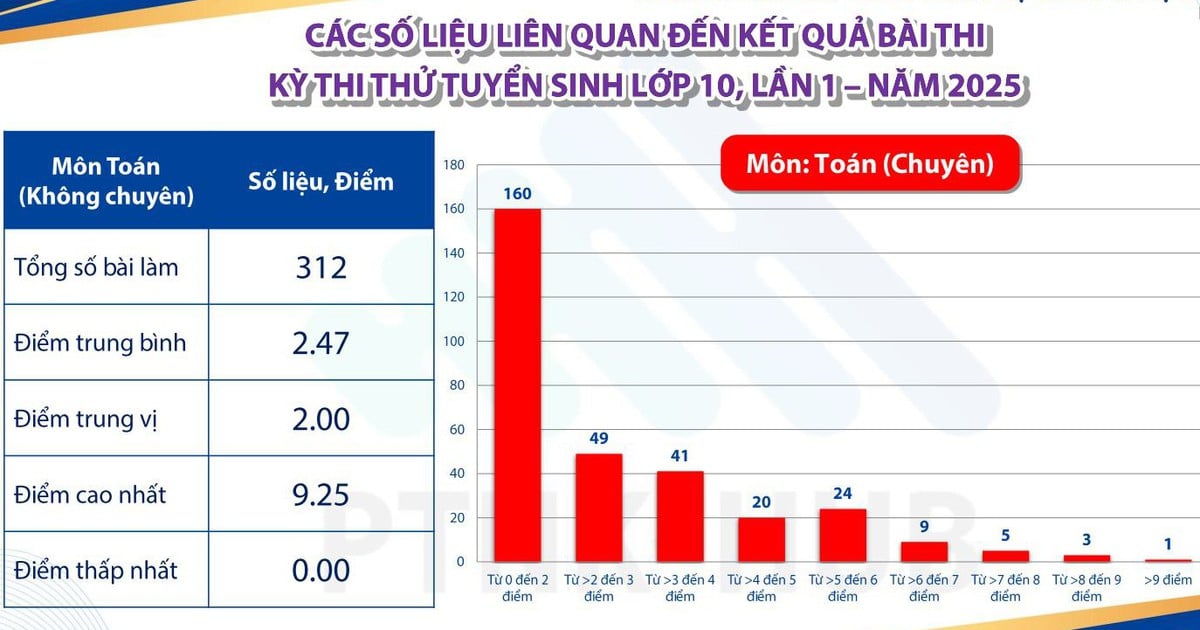In 2020, diphtheria broke out in the provinces of Dak Lak, Kon Tum, Binh Phuoc... Recently, Ha Giang and Dien Bien provinces recorded many cases of diphtheria, including 3 deaths.
Specialist Doctor 2 Nguyen Minh Tien, Deputy Director of the City Children's Hospital (HCMC) said that diphtheria is an acute infection caused by the diphtheria bacteria Corynebacterium diphtheriae. The disease is usually transmitted through the respiratory tract.
"The bacteria exist hidden in the form of spores, so if a person does not get vaccinated, skips vaccination, or does not get enough shots... it will create an immune gap, increasing the risk of getting the disease. Especially people with weak immune systems, people working in mountainous areas, and fields will have a higher risk of exposure to diphtheria bacteria and are more susceptible to infection," Dr. Tien analyzed.
According to Dr. Tien, in some countries, there are regulations for immigrants, international students... to be fully vaccinated against certain diseases, to avoid bringing pathogens in. Getting all the vaccinations, not skipping shots, helps create immunity to prevent disease.
"Complete vaccination schedules help protect 90-95% of people in the community from the risk of disease. Of course, it cannot protect 100%, but it still reduces the burden on the health system, and vaccinated people have a milder illness when they get sick," Dr. Tien analyzed.

Corynebacterium diphtheriae bacteria cause diphtheria
Symptoms of diphtheria
According to the Ho Chi Minh City Center for Disease Control, diphtheria has an incubation period of 2-5 days. At the onset, the patient has cold symptoms such as: sore throat, cough, fever with chills. Symptoms range from mild to severe, depending on the location of the bacteria causing the disease.
Anterior nasal diphtheria : The patient has a runny nose, with mucus discharge sometimes mixed with blood. Examination sometimes shows a white membrane on the nasal septum. This form is usually mild because bacterial toxins rarely penetrate the blood.
Pharyngeal and tonsil diphtheria : The patient is tired, has no appetite, sore throat, low fever, after 2-3 days a necrotic mass appears forming an ivory white or gray pseudomembrane, tough, firmly attached to the tonsils or can cover the entire throat area, this pseudomembrane is difficult to peel off and easily causes bleeding, swollen lymph nodes in the neck. If not treated actively, the patient can die within 6-10 days.
Laryngeal diphtheria : The disease progresses rapidly and is very dangerous with symptoms of fever, hoarseness, and barking cough. Examination may reveal pseudomembranes in the larynx or pharynx spreading downward. If not treated promptly, these pseudomembranes can cause airway obstruction, respiratory failure, and rapid death.
Diphtheria in other locations : Usually rare and mild, causing ulcers in the skin, mucous membranes of the eyes, vagina, and ear canal.
How dangerous is diphtheria?
Doctor Tien said that diphtheria is dangerous because when bacteria enter the body, it will cause myocarditis, brain damage, paralysis of respiratory muscles and limbs.
"The disease can progress very quickly, because when diphtheria bacteria attack the throat, it creates a pseudomembrane. This pseudomembrane swells, causing airway obstruction, progressive respiratory failure, making it difficult to run ECMO (extracorporeal membrane oxygenation)," Dr. Tien shared.
According to Dr. Bach Thi Chinh, Medical Director of the VNVC Vaccination System, the heart is the organ most susceptible to serious complications. About 30% of severe diphtheria patients have complications of myocarditis, arrhythmia, heart failure and death. Next are neurological complications, accounting for about 5% of all severe cases. The disease can cause damage to the peripheral nervous system and the central nervous system.

Medical staff advise and vaccinate children
The group of people at high risk of death is usually under 15 years old, over 40 years old, people with kidney and cardiovascular complications, people with poor health, immunodeficiency or patients with support devices in the body, for example, artificial heart valve replacement or ventricular shunt placement, intravenous catheter placement...
Doctor Chinh noted that the protection ability of the diphtheria vaccine will decrease over time, requiring a booster shot every 10 years, especially at milestones such as: From 4 to 7 years old; from 9 to 15 years old; women before or during pregnancy; the elderly from 50 years old and up; adults with chronic lung, cardiovascular, kidney diseases, etc.
How to prevent diphtheria?
The Department of Preventive Medicine - Ministry of Health recommends:
1. Take your child to get the full diphtheria vaccine on schedule.
2. Wash your hands regularly with soap; cover your mouth when coughing or sneezing; keep your body, nose, and throat clean every day; limit contact with people who are sick or suspected of being sick.
3. Ensure that housing, kindergartens, and classrooms are airy, clean, and have enough light.
4. When showing signs of illness or suspected diphtheria, you must be isolated and taken to a medical facility for timely examination and treatment.
5. People in the epidemic area need to strictly comply with taking preventive medicine and getting vaccinated as prescribed and required by health authorities.
Source link



![[Photo] General Secretary To Lam chairs the third meeting to review the implementation of Resolution No. 18-NQ/TW](https://vstatic.vietnam.vn/vietnam/resource/IMAGE/2025/4/14/10f646e55e8e4f3b8c9ae2e35705481d)
![[Photo] Children's smiles - hope after the earthquake disaster in Myanmar](https://vstatic.vietnam.vn/vietnam/resource/IMAGE/2025/4/14/9fc59328310d43839c4d369d08421cf3)
![[Photo] Touching images recreated at the program "Resources for Victory"](https://vstatic.vietnam.vn/vietnam/resource/IMAGE/2025/4/14/99863147ad274f01a9b208519ebc0dd2)

![[Photo] Opening of the 44th session of the National Assembly Standing Committee](https://vstatic.vietnam.vn/vietnam/resource/IMAGE/2025/4/14/03a1687d4f584352a4b7aa6aa0f73792)





















































































Comment (0)